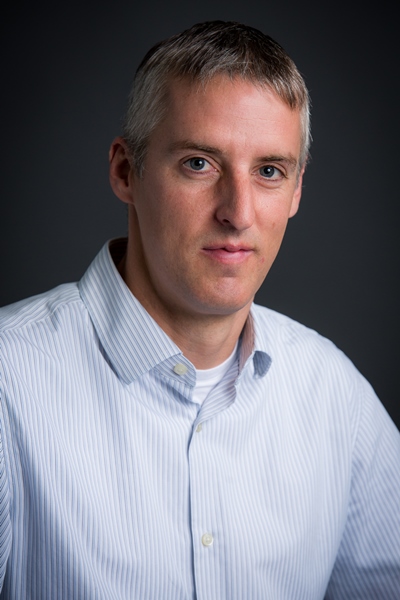 Graeme Henkelman is a hidden asset in building better batteries--for cars, cell phones, and all manner of energy-saving devices.
Graeme Henkelman is a hidden asset in building better batteries--for cars, cell phones, and all manner of energy-saving devices.
Henkelman, who leads the Center for Computational Molecular Sciences, and is a professor of chemistry, has notable, albeit unheralded successes. His research helped UT Professor John Goodenough—the famed material scientist whose research laid the groundwork for the development of the rechargeable lithium-ion battery inside every laptop and cell phone—improve the performance of an iron phosphate battery design. He also collaborated with UT Chemistry Professor Richard Crooks to design new gold-palladium-platinum nanoparticles that can potentially catalyze reactions in a Lithium-air battery.
By computational modeling how electrons interact in materials, Henkelman found ways to improve the batteries in both cases. For Goodenough’s battery, it involved a 20 percent performance boost gained by swapping oxygen on the phosphate surface for nitrogen. The new Crook’s catalyst both optimizes the reactivity of a thin platinum shell on the catalytic particles while simultaneously minimizing the use of the expensive metal.
“For us to try a new material, we essentially just change some numbers in our program,” Henkelman said. “That’s where I see this going in the future, designing materials in a rational way.”
Henkelman’s computational modeling of electronics materials, and the chemical reactions that make them work, was honored this year with the 2017 Peter O’Donnell Distinguished Research Award. The distinction recognizes sustained research contributions by an individual, while providing $100,000 over four years for future research.
As Henkelman’s collaborations show, computationally modeling materials can help scientists test a battery’s properties before it’s built. However, accurately modeling the chemistry that governs material behavior at the atomic level where electron interactions take place, is easier said than done. The task becomes especially difficult when material properties of even pure elements are apt to change depending on the surrounding condition or the amount of material present. For example, an ounce of gold, such as that found in a coin or a ring, is a completely inert metal. But reduced in size to nanometer particles, gold takes on remarkable catalytic properties.
Henkelman plans to use the award's research funds to explore the chemical properties of experimental battery materials, such as lithium-air, and lithium-sulfur—both of which have the potential for improved energy storage—as well as solid-state batteries. All have the potential to be both safer and denser than current batteries that require liquid electrolytes, or “battery acid,” to function.
“The award gives us an opportunity to push in new directions…it’s great seed money where you can really try new things,” Henkelman said.
Many of Henkelman’s collaborators are experimentalists who actually build the batteries. Henkelman's colleagues at ICES immerse the laboratory findings in ICES' strong applied mathematics community of core faculty and visiting researchers and take the lab results further through models based on the latest mathematical formulas.
“What I find very valuable is being able to learn from the applied math people, because sometimes we’ll have a challenge we consider in a very practical sense and my ICES collaborators have already looked at this sort of problem from various theoretical, mathematical perspectives,” Henkelman said. “Being able to get fundamental ideas from people in widely different fields, who have relevant, valuable expertise is transformational.”
There is plenty of room for battery improvement, Henkelman said, especially when it comes to new markets like fuel cells that power electric cars. Here, even small improvements in heat reduction or energy storage become game changers. Henkelman said the potential to make a big difference in how society stores and generates power is a big motivator to keep improving the computational methods that lead to insights on battery performance before they batteries are ever built.
“We can make a real difference and impact important societal needs like energy production,” Henkelman said.









